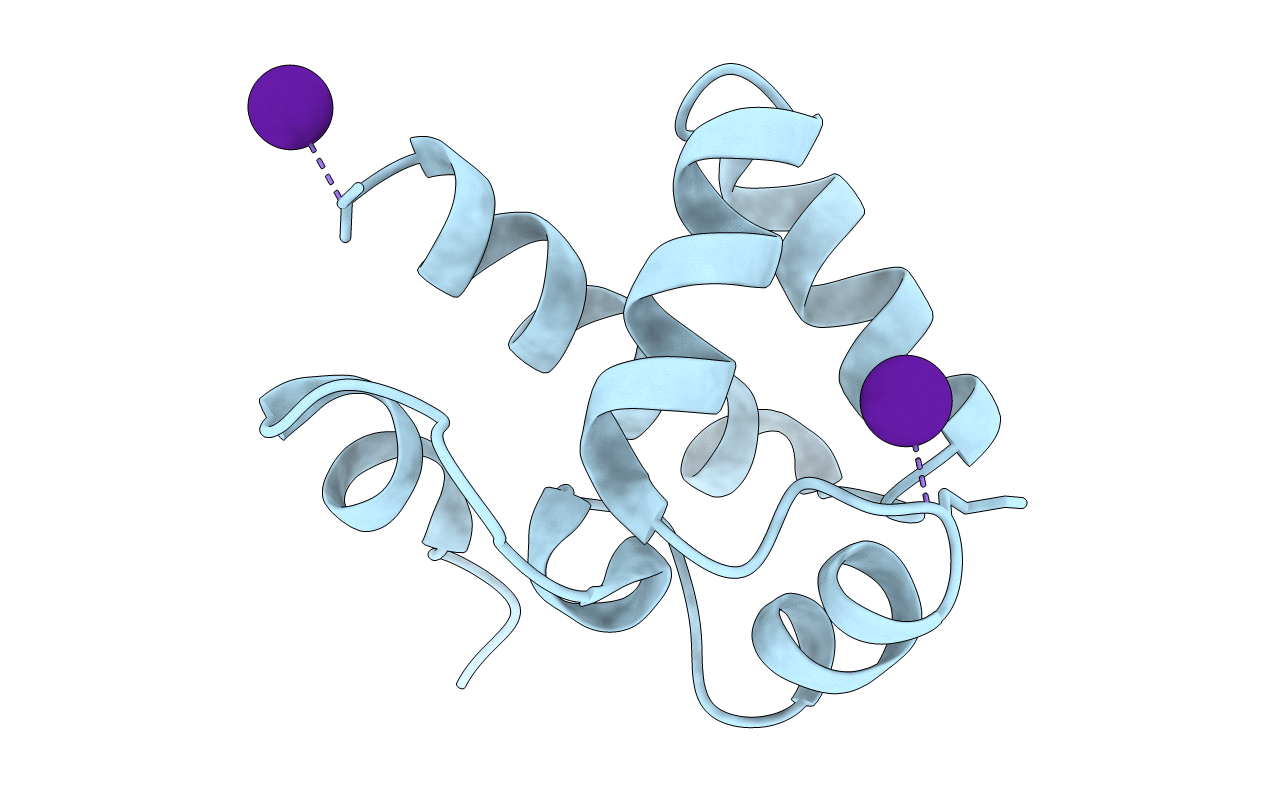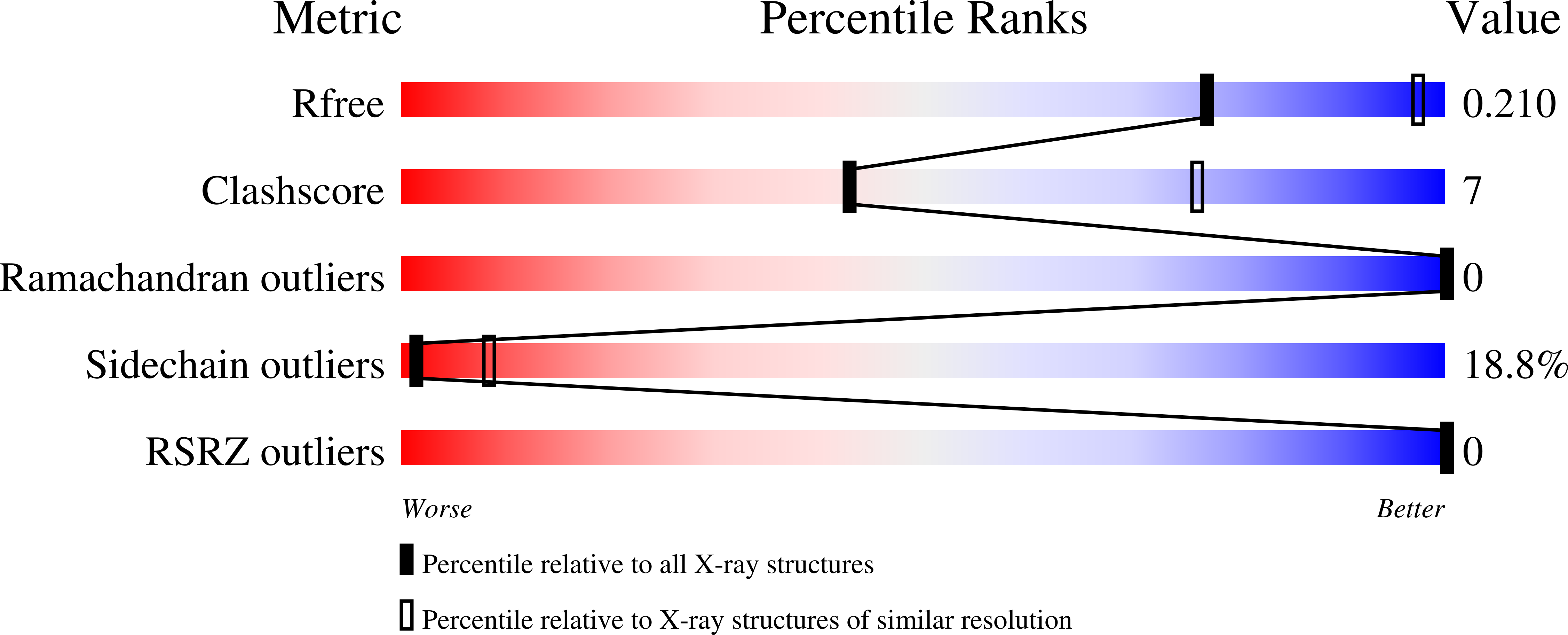
Deposition Date
2020-09-08
Release Date
2021-07-07
Last Version Date
2024-11-13
Entry Detail
PDB ID:
7ABM
Keywords:
Title:
X-ray structure of phosphorylated Barrier-to-autointegration factor (BAF)
Biological Source:
Source Organism:
Homo sapiens (Taxon ID: 9606)
Host Organism:
Method Details:
Experimental Method:
Resolution:
3.00 Å
R-Value Free:
0.32
R-Value Work:
0.19
R-Value Observed:
0.20
Space Group:
P 32 2 1


